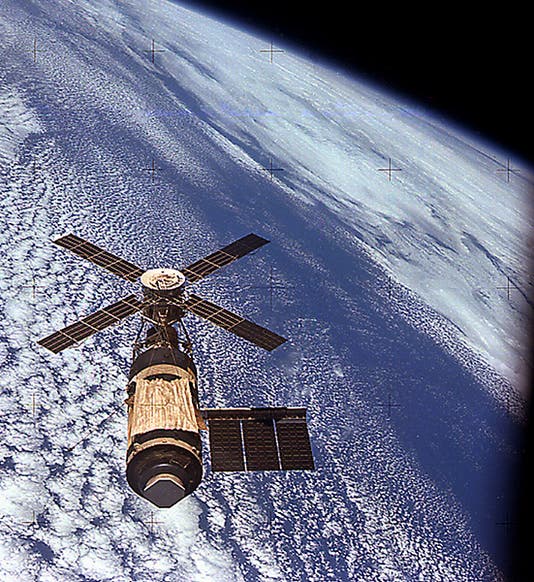Scientist of the Day - Jack Kinzler
Jack Kinzler, NASA's "Mr. Fix-It" for nearly twenty years, was born Jan. 9, 1920. Kinzler was a born tinkerer who avoided college because it would take time away from making model airplanes, but who responded to an ad from a government agency looking for model builders, was hired, and therefore was on the spot when the agency morphed into NASA in 1958. Kinzler became NASA's head of Technical Services and held this position until he retired in 1977.
Kinzler’s most famous feat was saving the first U.S. space station, Skylab, when a sunshield was damaged during launch on May 14, 1973. Without the shield, the station interior would get so hot that it would be uninhabitable. Most advisers were opting for a spacewalk by the first astronauts to arrive, but spacewalks are inherently dangerous, and need to be planned meticulously, which normally takes years. They had only ten days before the first crew would launch. Kinzler went out and bought four telescoping fiberglass fishing poles, each some 14 feet long when extended, and NASA provided a space-age tarpaulin. Kinzler had learned that there was a small port about where the solar protection was needed. His solution was to construct what looked like a very tall and very flimsy patio umbrella that could be inserted through the small porthole, and then opened up via wires and springs to spread the tarpaulin over the space station. They packed it aboard Skylab 2, with Pete Conrad as commander, and on May 26, 1973, the crew entered the space station, deployed the 24 x 28 foot parasol, and it spread out over the exterior as nicely as could be. Soon the temperature inside dropped from 130°F to 70°, and there it remained for the rest of not only this mission, but the two Skylab missions that came after it. You can see the nylon tarp, still in place, when the last crew, Skylab 4, left for good and took this picture in 1974 (first image).
Kinzler is also credited with designing the Apollo flag staff (LFA, or Lunar Flag Assembly, in moon-speak) that allowed the U.S. flag to appear to wave in the breeze on the airless and breezeless lunar surface (second image); it was deployed six times by the six Apollo crews. Kinzler died in 2014, at the age of 94. The story of Kinzler and the Skylab parasol is now the quintessential answer to the question, why do we need tinkerers when we have engineers? The third image shows Kinzler at a press conference after the successful parasol deployment, holding up a photograph of his creation.
Dr. William B. Ashworth, Jr., Consultant for the History of Science, Linda Hall Library and Associate Professor, Department of History, University of Missouri-Kansas City. Comments or corrections are welcome; please direct to ashworthw@umkc.edu.









